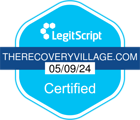Want to listen instead of read? Tune in to this article overview:
When detoxing, hydration is key. However, certain food groups also have benefits when it comes to helping with the discomfort of withdrawal symptoms and detoxification.
Article at a Glance:
- Diet plays an important role when detoxing from alcohol, especially when detoxing from alcohol at home.
- Fruits and vegetables are high in fiber and digest quickly into the body during detox.
- Whole grains, low-fat proteins, and vitamin B-rich foods are recommended while detoxing.
- Good foods to eat during detox include salmon, broccoli, lean beef, and cayenne pepper.
What Is Alcohol Detox?
Alcohol detox is the process of eliminating alcohol from your body after a period of heavy or prolonged drinking. It marks the first crucial step toward recovery from alcohol misuse, as your body works to flush out toxins and gradually reestablish its normal chemical and physiological balance. During detox, you may experience a range of withdrawal symptoms of varying intensity, depending on factors like how long and how heavily you have been drinking, as well as your overall health status.
Although detox can be uncomfortable, it is often necessary before moving on to other phases of treatment and recovery, such as therapy or support groups. A medically supervised detox can help mitigate severe withdrawal symptoms and ensure your body has the best chance of stabilizing safely. It also provides an opportunity to address any co-occurring health conditions that might have developed alongside alcohol misuse.
Symptoms of Alcohol Withdrawal
Alcohol withdrawal symptoms can differ from person to person, but they typically present in a predictable pattern. The severity and duration of these symptoms can vary based on personal factors like age, overall health, the frequency and quantity of alcohol consumption, and any co-occurring mental health conditions. Common signs and symptoms include:
- Mild Symptoms: Irritability, anxiety, insomnia, headaches, nausea, sweating, and tremors
- Moderate Symptoms: Increased heart rate, heightened blood pressure, increased body temperature, confusion, and more pronounced shaking
- Severe Symptoms (Delirium Tremens or DTs): Extreme agitation, severe confusion, hallucinations (visual or auditory), seizures, and a dangerously high heart rate
Recognizing these signs can help you know when you might need professional intervention. Severe symptoms, particularly seizures or delirium tremens, are considered medical emergencies and require immediate medical care.
Treatment Can Be Life Changing. Reach out today.
Whether you are struggling with addiction, mental health or both, our expert team is here to guide you every step of the way. Don’t wait— reach out today to take the first step toward taking control of your life.
Alcohol Withdrawal Timeline
Withdrawal typically follows a general timeline, though each person’s experience is unique:
- 6–12 Hours After the Last Drink
Mild symptoms such as insomnia, nausea, anxiety and tremors often begin to surface. You might also experience mood swings and a headache. - 12–24 Hours After the Last Drink
Symptoms may intensify during this period. Some individuals develop alcoholic hallucinosis, which can involve visual, auditory or tactile hallucinations. - 24–48 Hours After the Last Drink
Moderate withdrawal symptoms may persist or worsen, especially if you have a history of heavy drinking. These can include confusion, increased blood pressure and a rapid heart rate. - 48–72 Hours After the Last Drink
For some people, severe symptoms like delirium tremens (DTs) begin. This serious medical condition includes disorientation, hallucinations, profuse sweating, and a significantly elevated heart rate. It typically peaks around 72 hours but can last up to several days.
Every individual’s withdrawal process is unique. If you suspect you might experience moderate to severe withdrawal, professional medical supervision is strongly recommended.
Can I Safely Detox From Alcohol at Home?
Detoxing at home is sometimes possible for individuals with mild alcohol dependence, but it comes with risks. The unpredictability of withdrawal symptoms means that what begins as mild discomfort can rapidly progress to a medical emergency if not monitored properly. People who have pre-existing health conditions or a history of intense withdrawal symptoms — including seizures or delirium tremens — are at a higher risk of complications.
A professionally supervised detox provides clinical support, medication management and vital monitoring to ensure you remain safe and as comfortable as possible. If you choose to detox at home, it is essential to consult a healthcare provider first. They can help assess your situation, determine the level of care you may need, and possibly prescribe medications that can alleviate certain withdrawal symptoms. However, to minimize health risks and increase the likelihood of a successful start to recovery, many professionals recommend an inpatient or outpatient detox program under medical supervision.
Best Foods for Alcohol Detox
Withdrawal from alcohol is different for everyone, and it can last anywhere from a few days to an entire week. The alcohol detox stage (when your body is ridding itself entirely of alcohol) can last even longer, continuing for a few weeks after withdrawal ends. Fortunately, eating a healthy, nutrient-rich diet can help you reduce many of the uncomfortable effects related to alcohol withdrawal and detox.
Hydration
When detoxing from alcohol, you’ll likely be told that drinking water is a vital part of the process. During alcohol withdrawal, the body is adjusting to less fluid intake than usual, which is why hydration is so important during detox. Withdrawal symptoms like vomiting, diarrhea and sweating can also contribute to dehydration, but drinking water can help replenish lost fluids.
Fruits and Vegetables
Due to their high amounts of fiber, fruits and veggies digest slowly, which helps regulate blood sugar and hunger levels. Additionally, people researching home remedies for alcohol withdrawal are often surprised to learn they may crave sweets. Fruits contain sugar, which can fulfill the craving for something sweet without weighing too heavily on a person’s stomach since appetite tends to decrease during the detox stage. Fruit is also hydrating and packed with antioxidant vitamins. Good fruits to snack on or blend into a smoothie include berries, citrus, peaches, melon and bananas.
Whole Grains
Carbohydrates are vital for recovery, as they provide energy and B vitamins that are depleted with heavy alcohol use. Whole grains like oats, brown rice and whole wheat bread are high in fiber, which is good for the gut. Healthy gut bacteria can help support a healthy liver and kidneys— the body’s most important detox organs.
Foods Containing Vitamin B
Prolonged alcohol consumption leads to a lack of vitamin B, so it is important to replenish your body’s supply. Foods high in vitamin B include salmon, poultry, dairy, leafy greens, beans, lentils and whole grains.
Proteins Low in Fat
Many alcoholics in detoxification will have a decreased appetite or simply be turned off by food. Bone broth can be a helpful protein option for those who can’t get food down. For those who can, good sources of protein include seafood, poultry, eggs, soy and lentils.
Cayenne Pepper
Though it may not sound appealing, adding cayenne pepper to foods can reduce alcohol cravings. Cayenne pepper can also aid in decreasing alcohol withdrawal symptoms like stomach upset, nausea and headaches, and it promotes a healthy gut.
Omega-3 Fats
Healthy fats reduce inflammation, stabilize mood and improve brain function. Salmon, walnuts, chia and flaxseed are rich in omega-3s.
Foods to Avoid on an Alcohol Detox Diet
Some foods can worsen withdrawal symptoms or make detox more challenging. Eliminating or minimizing these items in your diet can help your body heal more effectively, reduce cravings, and stabilize your mood and energy levels.
Processed Foods
Processed foods often contain high amounts of sodium, preservatives, and artificial additives that can burden your already-stressed body. During alcohol detox, your liver and kidneys work overtime to remove toxins. Consuming foods that are hard to digest or laden with chemicals can make this process even more taxing. Moreover, processed foods tend to have fewer nutrients, providing empty calories that do little to support physical and mental restoration.
Sugar
Although sugar can offer a quick energy boost, it can also cause sharp blood sugar spikes and crashes. This rollercoaster can exacerbate mood swings, increase irritability and hamper your recovery process. Additionally, overconsumption of sugar might trigger cravings for alcohol, as both can activate the brain’s reward pathways. Reducing refined sugars and opting for naturally sweet foods like fruit can help stabilize your mood and maintain steady energy levels.
Caffeine
During detox, many people experience anxiety, insomnia and restlessness. While you may be used to relying on caffeine for energy, it can worsen these symptoms by stimulating your nervous system. Excessive caffeine may also interfere with your ability to stay hydrated, which is crucial during withdrawal. If you can’t go without coffee or tea, try limiting your intake to one cup per day or switch to decaf or herbal teas to avoid intensifying withdrawal-related jitters and anxiety.
Get Help for Alcohol Addiction and Withdrawal
Although eating these foods during detox won’t ensure smooth sailing, they will likely ease the discomfort and cravings that accompany the detox stage. However, in cases where withdrawal symptoms are overly uncomfortable or potentially dangerous, medical detox may be necessary. These programs are offered at professional alcohol rehab facilities like The Recovery Village, and they help make withdrawal a safer and more comfortable process. Contact us today to learn more about detox and treatment programs that can help you overcome withdrawal and begin a healthier, alcohol-free future.
Is an at-home alcohol detox or medical detox right for you?
Use this checklist to prepare for your detox and ensure your safety.








